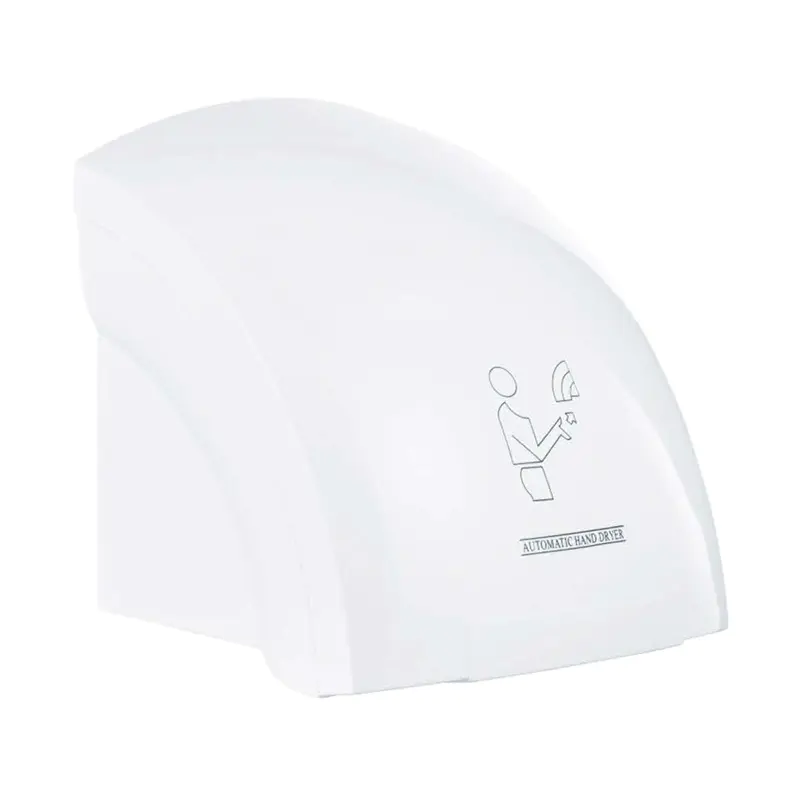A high speed hand dryer is an increasingly common fixture in public restrooms and commercial facilities. Designed to quickly dry hands using powerful airflow, these devices offer an alternative to traditional paper towels. The convenience and efficiency of a high speed hand dryer make it a practical solution for reducing waste and improving hygiene in busy environments.
One of the main advantages of a high speed hand dryer is the speed at which it dries hands. Compared to conventional hand dryers, which can take up to 30 seconds or more, high speed models often complete the drying process in under 15 seconds. This quicker drying time helps reduce queues and improves user satisfaction in facilities with high foot traffic.
The operation of a high speed hand dryer involves a strong air stream, sometimes combined with heating elements or advanced air filtration systems. Some models use heated air, while others rely on unheated, high-velocity airflow to evaporate moisture efficiently. The design typically directs air in a way that removes water from the hands without splashing, helping maintain a cleaner restroom environment.
Energy efficiency is another consideration when using a high speed hand dryer. These dryers generally consume less electricity per use compared to traditional dryers that take longer to dry hands. By reducing energy consumption, high speed hand dryers contribute to lower operational costs and environmental benefits. Some models are also equipped with sensors that activate the airflow only when hands are detected, further conserving energy.
Hygiene plays a critical role in the appeal of a high speed hand dryer. Many models include features such as HEPA filters to remove bacteria and viruses from the air before it reaches users. This filtration helps reduce the spread of germs and supports overall restroom cleanliness. Additionally, the touch-free operation minimizes contact points, lowering the risk of cross-contamination.
The installation of a high speed hand dryer requires attention to placement and power supply. Proper positioning ensures easy access and efficient airflow direction. Wall-mounted units are common, but some designs allow for countertop or recessed installation depending on the space. Ensuring compliance with electrical safety standards is important during installation.
Maintenance for a high speed hand dryer is generally simple. Regular cleaning of the exterior and occasional replacement or cleaning of filters help maintain performance and hygiene. The durability of these devices varies by model, but many are designed to withstand heavy use in public or commercial settings.
Noise level is sometimes a concern with high speed hand dryers due to the powerful airflow needed to dry hands quickly. Manufacturers address this by designing quieter motors and using sound-dampening materials. In environments such as offices or libraries, selecting a model with lower noise output can improve user comfort.
The environmental impact of a high speed hand dryer compares favorably to disposable paper towels. By eliminating paper waste, these dryers reduce landfill contributions and the resources needed for paper production. This sustainability aspect aligns with growing efforts by businesses and public facilities to adopt greener practices.
Choosing the right high speed hand dryer involves considering factors such as drying time, energy consumption, noise level, and hygiene features. Budget and aesthetic preferences may also influence the decision. With a variety of models available, selecting a dryer that fits the specific needs of a facility helps ensure user satisfaction and operational efficiency.
A high speed hand dryer offers a practical and eco-friendly option for drying hands quickly and hygienically. Its combination of fast drying times, energy efficiency, and hygiene features makes it suitable for a wide range of settings. As demand for sustainable and convenient restroom solutions grows, the use of high speed hand dryers is likely to continue increasing.
